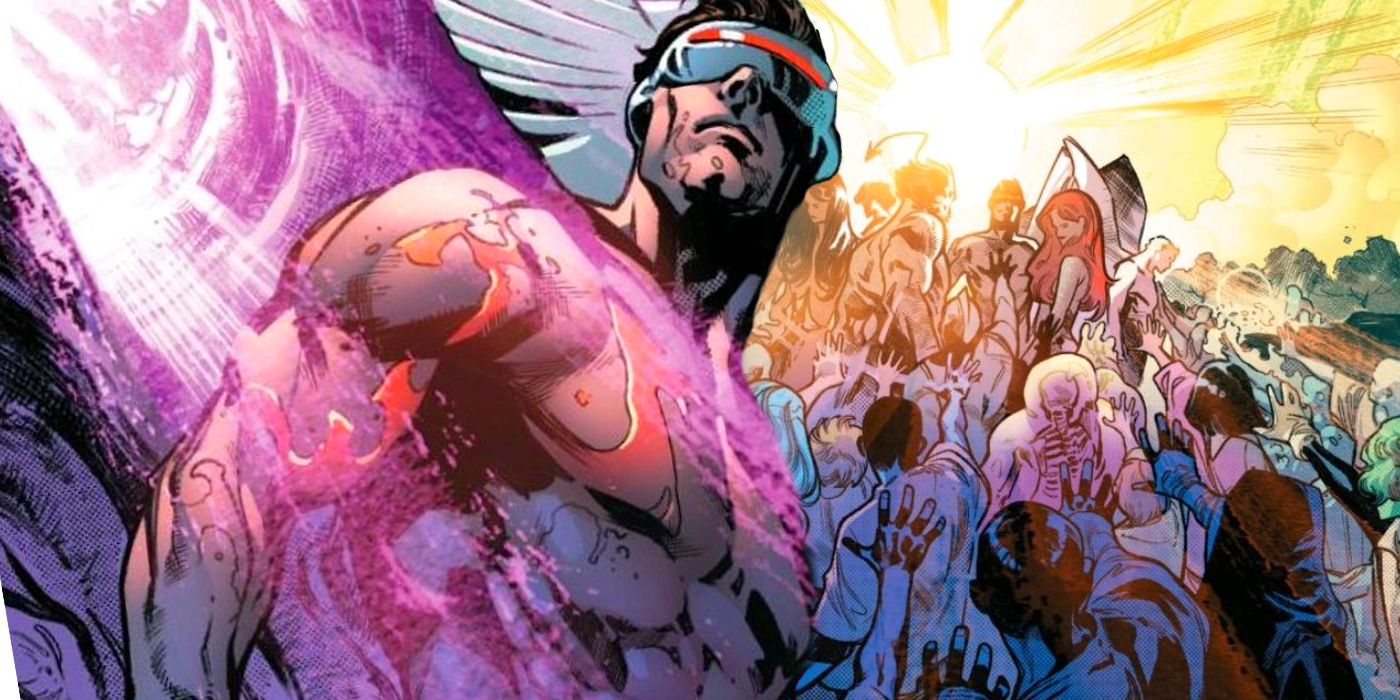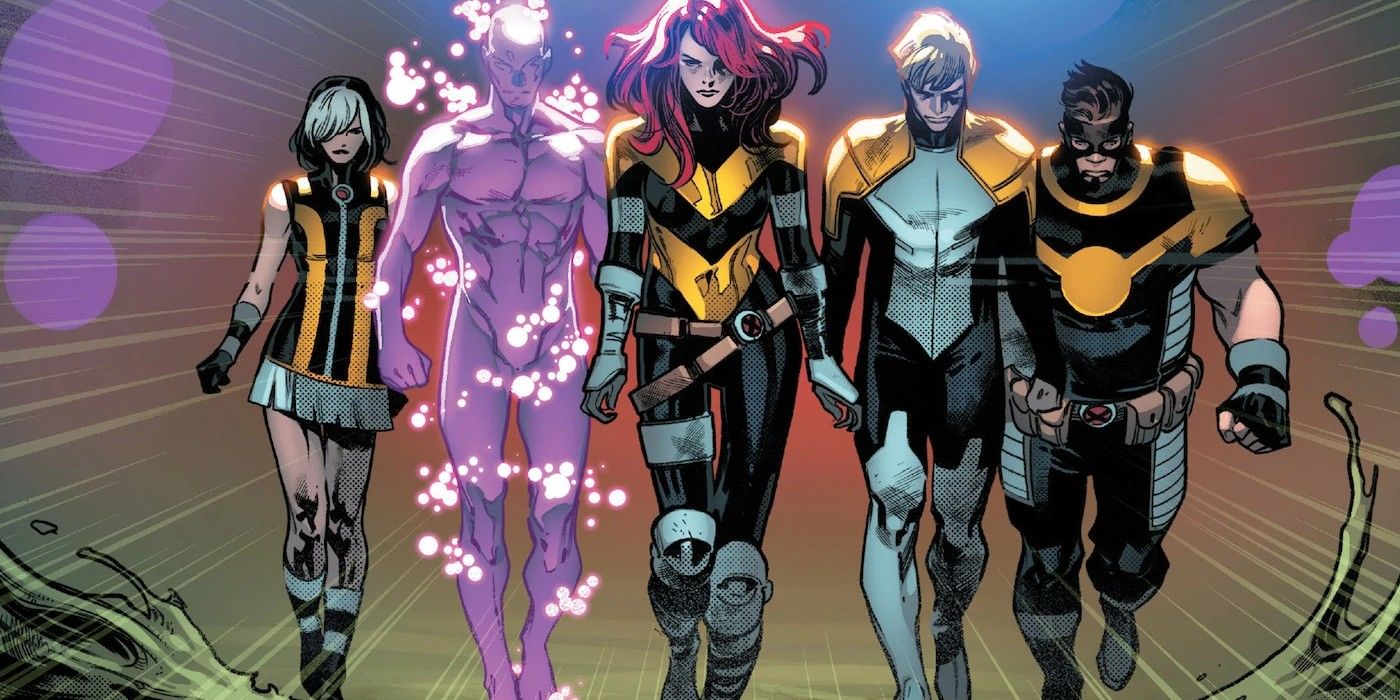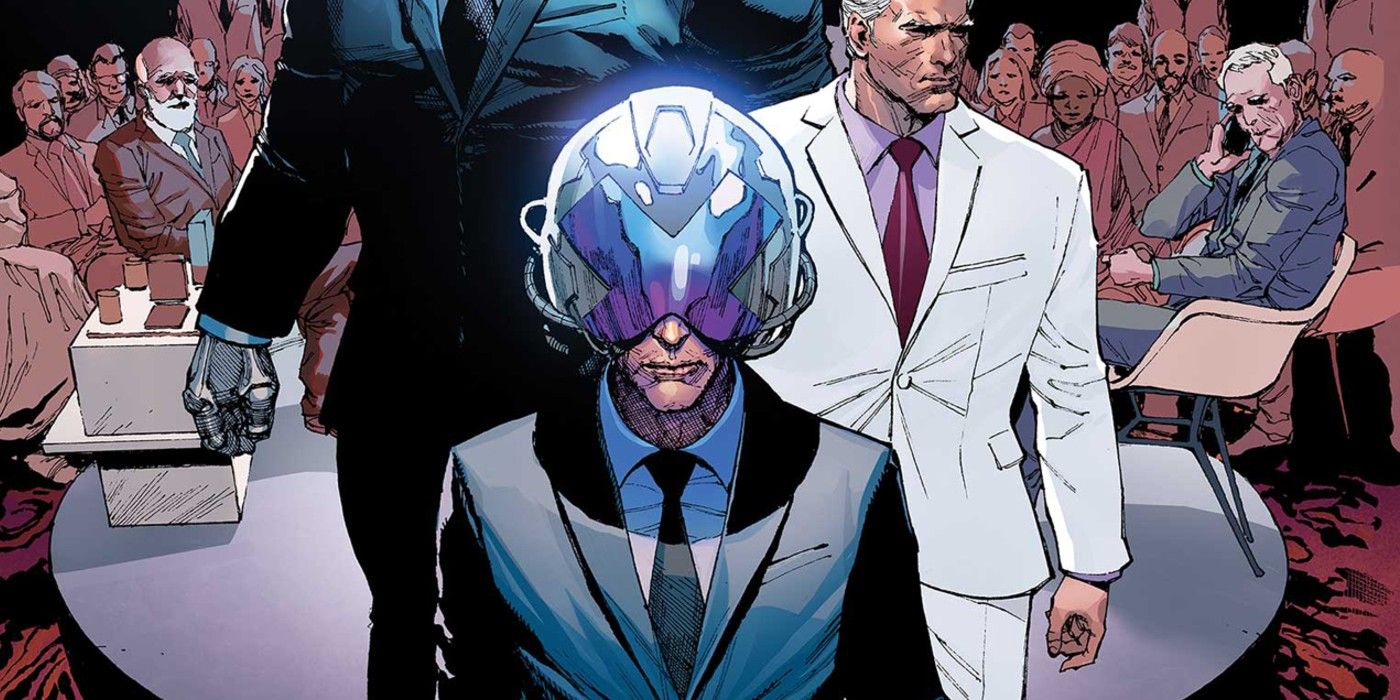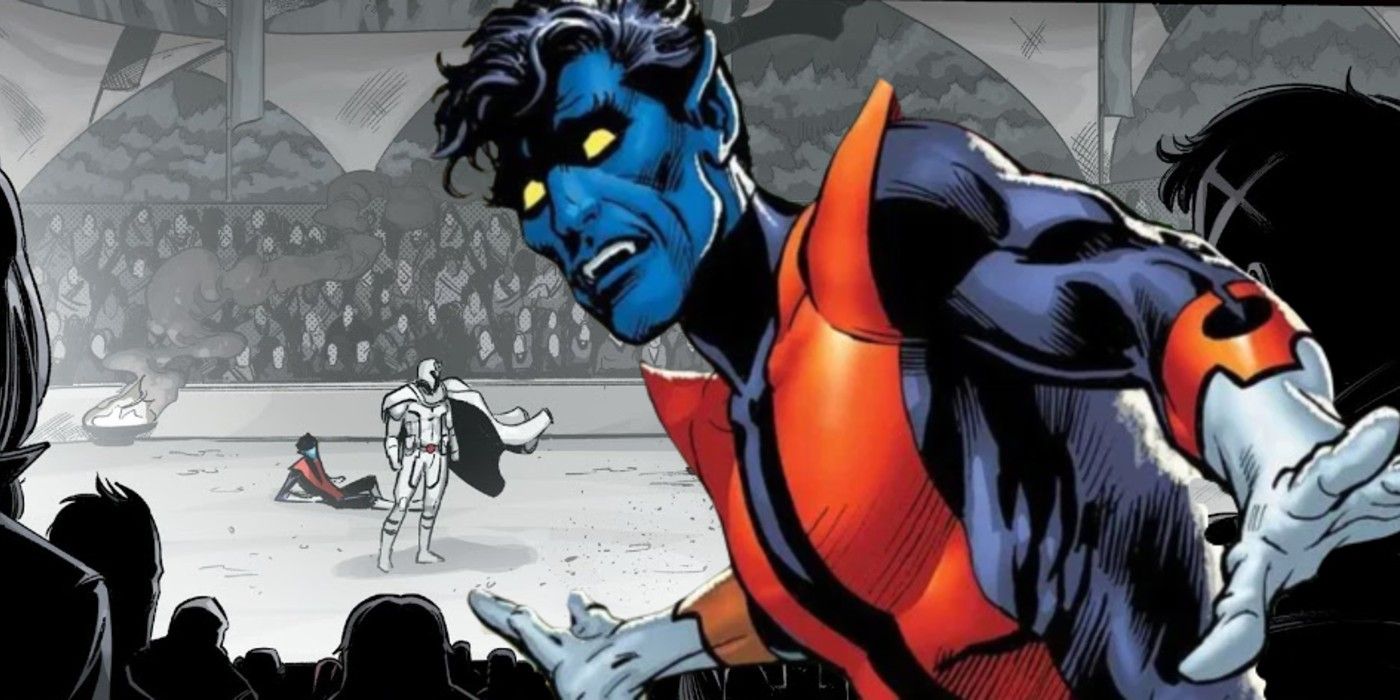The newly formed mutant nation of Krakoa has introduced its fair share of world-altering innovations, but one that has still not been revealed to the population of Earth is perhaps its most progressive - the X-Men have figured out how to cheat death, resurrect dozens of previously dead mutants, and make almost all mutants immortal. That sounds like a tall order, but with the Reign of X, the mutant population have begun emphasizing their ability to combine powers to achieve amazing, and previously impossible, feats. The Krakoan's ability to revive their dead brethren comes from the combined might of several prominent mutants, dubbed the Five, and the psionic power of Professor X's Cerebro technology.
The mutants new Resurrection Protocols, introduced first in House of X, have changed the game for the X-Men, and all the X-Teams, in a major way, allowing them to truly go full-throttle in any mission, because if they die they can be reborn with almost all of their memories intact. A prime example of this is Quentin Quire, the omega-level mutant known as Kid Omega, who is on X-Force and has died many times on Krakoan missions before being revived by the Five. Quire has been shown taking advantage of the Five's ability to tweak his genetics, opting for a body with naturally pink hair, and other mutants who died of old age have been resurrected in youthful bodies. However, the Resurrection Protocols include complications, such as when a clone dies, or if a mutant dies in the Arthurian-era Otherworld, which warps their DNA and makes them return as blank slate versions of themselves. So, how do the protocols work exactly, and who are the Five?
The Sacred Five
The sacred Five are Egg (Fabio Medina, previously known as Goldballs), Proteus (Kevin MacTaggert), Tempus (Eva Bell), Elixir (Josh Foley), and Hope Summers. These five mutants' powers, when combined, are able to create a husk-like body in an "egg," and then gestate the body in hours with time-altering powers, before the mutant's "consciousness" is psionically inserted into the husk and they are reborn. The first ever group of mutants resurrected using this technology were a strike force of X-Men who traveled to space to destroy Orchis' Mother Mold, saving mutantkind's future while sacrificing their lives for the cause. After this group was revived, Professor X made an impactful speech about the mutants conquering of death,
A great thing has happened today. A miracle made possible by mutant hands. The great work of the Five. By the power that is their birthright, the Five have returned these mutants thought lost to us... mutants all.
The mutant resurrection machine begins with Egg, who recently discovered that his gold balls are really gold eggs, which are biological in nature but not inherently viable. Next, Proteus uses his reality-warping powers to make the eggs viable, before Elixir uses his cellular generation abilities to form a mutant embryo in the egg. After the embryo is formed, Tempus uses her time-altering powers to speed up the gestation of the embryo to the correct physiological age. Professor X reports that Hope Summers' ability to replicate the powers of mutants around her is what creates the unity between the Five's powers, leading to them being able to create an adult mutant clone - albeit one lacking consciousness.
Cerebro Technology
The Five's combined powers would do nothing without the telepathic technology of Cerebro, and Mister Sinister's ever-expanding database of all mutants' DNA profiles. In Powers of X, Magneto and Professor X slyly manipulated Mister Sinister, the leading researcher into cloning technology, to focus his genetic research on existing mutants, making sure that Krakoa had access to every living or deceased mutants gene pool, before psionically wiping his memory (since he is still Mister Sinister, after all). The Krakoan nation, and the Five, now have access to almost every living or dead mutants' DNA profile, making it easier for Elixir to create a clone body through his cellular regeneration.
Professor X's Cerebro technology is the final step, scanning and recording the consciousness of any mutant who has even been scanned by Cerebro in the past, and then "uploading" that into the fully gestated clone. Additionally, Cerebro is now updating weekly to download mutants latest memories, and Xavier has put back-ups of Cerebro in multiple locations, so if his main Cerebro machine is ever destroyed, the bank of mutant "consciousness" will not be lost. This comes in very handy when X is assassinated in X-Force #1 and his Cerebro helmet is destroyed, as Jean Grey is able to use her own abilities to access Cerebro from one of the satellite locations and resurrect X.
While there's some debate among fans as to whether these mutants are truly resurrected or just copies, there does seem to be a spiritual link. The embodiment of Death was revealed to be herself dying due to the X-Men effectively creating a world of eternal life, and death goddess the Morrigan targeted mutants as revenge for their hubris. It also recently emerged that the villainous psionic predator Onslaught was consuming the memories lost between a mutant's last Cerebro back-up and their actual death, feeding on the scraps of self that didn't make it to resurrection. Thankfully, mutantkind's offensive power is also stronger than ever before, and they were able to deal with the angered gods and even defeat Onslaught thanks to Nightcrawler's invention of a new philosophy called the Spark.
Krakoan Culture
Krakoa's new Resurrection Protocols have not only had an impact on how X-Teams can function, but also the general culture of the new Krakoan nation. Mutants who are alive, but are still depowered after the events of M-Day, can now enter the Arena and engage in the Crucible, a brutal one-on-one fighting event hosted by the Silver Samurai where a depowered Krakoan can choose their opponent and fight to the death, dying honorably at the hands of a fellow mutant. Once the crucible is done, that mutant can then be reborn with access to the powers that were taken away by the Scarlet Witch.
The Crucible has the side-effect of moving warlike mutants to the front of the resurrection queue, shaping Krakoa's culture accordingly. In response, Nightcrawler has been establishing a new theory of group well-being that deprioritizes individual survival where a death helps the larger species - a philosophy he has devised and spread, but must now protect from darker voices, like that of Magneto.
With so many mutants being resurrected and others dying on missions, Krakoa's ruling Quiet Council has worked very hard to keep the Resurrection Protocols a secret from the rest of the world, and to also hold firm boundaries around who can and cannot be reborn. For most of the mutant nation's history, founders Professor X and Magneto set the rules of this process, but after their edict against resurrecting clones was judged unfair, the Five have taken full control of the process. Sadly, the most recent issues of X-Men show that tenacious journalist Ben Urich is now aware of Krakoa's resurrection tech, making it only a matter of time until it's exposed. The ability to bring mutants back from death has redefined the X-Men, along with all of mutantkind, but the process isn't easy, requiring specific superpowers and a network of support and secrecy to operate.




